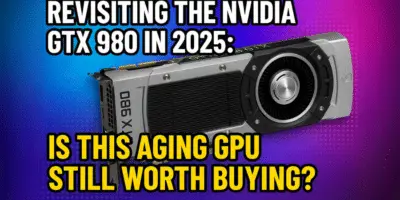Hey there! If you’ve ever felt completely lost trying to figure out which monitor to buy, trust me—you’re not alone. With companies throwing ridiculous specs and numbers at you (500Hz refresh rate, anyone?), it’s tough to know what actually matters and what’s just marketing fluff.
I’ve spent way too many hours researching and testing monitors, and I’m here to cut through the noise. Let’s break down what you really need to focus on when shopping for a new display, without the technical jargon that makes your head spin.
Table of Contents
- Panel Technology: The Foundation of Your Display
- Resolution & Screen Size: They’re Married, Don’t Separate Them
- Refresh Rate: The Diminishing Returns Are Real
- HDR: High Dynamic Range (Often Disappointing on Monitors)
- Multi-Monitor Setup Tips (Learn From My Mistakes)
- How to Search for Monitors Like a Pro
- Quick Note on G-Sync vs FreeSync
- Final Thoughts
Panel Technology: The Foundation of Your Display
First things first—the technology behind your screen fundamentally changes your experience. There are two main categories:
LCD Panels (The Traditional Choice)
LCD screens use a backlight that shines through liquid crystals and color filters to create the image you see. Within the LCD family, there are three main types:
TN (Twisted Nematic)
- Pros: Super fast response times, high refresh rates (up to 500Hz!), affordable, energy-efficient, and reliable over time
- Cons: Terrible viewing angles (colors look weird unless you’re directly in front), poor contrast, and not great for color-sensitive work
- Best for: Competitive gamers who prioritize speed over everything else
VA (Vertical Alignment)
- Pros: Best contrast ratio among LCD panels, decent brightness
- Cons: Extremely slow response times causing “smearing” or “ghosting” (that blurry trail when scrolling), average viewing angles
- Best for: Movie watching where contrast matters, but not for gaming or fast-moving content
IPS (In-Plane Switching)
- Pros: Excellent viewing angles, superior color accuracy, good response times (faster than VA, slower than TN), high refresh rates (up to 360Hz)
- Cons: “IPS glow” in the corners, contrast depends on backlight technology, slightly higher power consumption
- Best for: The perfect middle ground—good for both gaming and creative work
Look, if you’re shopping for an LCD monitor, IPS is typically your best bet unless you’re a competitive esports player (then go TN) or really only care about watching movies with deep blacks (then consider VA).
OLED Panels (The New Kid on the Block)
OLED is fundamentally different—each pixel generates its own light without needing a backlight.
Types of OLED: W-OLED vs QD-OLED
- W-OLED has four sub-pixels (red, green, blue, and white)
- QD-OLED has the traditional RGB sub-pixels with a blue light source
- The differences are subtle for most users (QD-OLED can get brighter but is more expensive)
OLED Pros:
- True, perfect blacks (pixels actually turn off completely)
- Infinite contrast ratio (seriously, it’s not marketing hype)
- Gorgeous, vibrant colors
- Ultra-fast response times with no ghosting
- Thinner, lighter design
- Lower power consumption
OLED Cons:
- The elephant in the room: burn-in risk (static elements can permanently damage pixels)
- Not as bright as high-end LCDs
- More expensive
- Requires some babysitting (pixel refreshers, avoiding static images)
I personally use both—my main display is an IPS, and I have an OLED on the side. Why? Because while OLED looks incredible, the burn-in anxiety is real, especially if you’re playing games with static HUDs or working with the same software for hours.
Resolution & Screen Size: They’re Married, Don’t Separate Them
Here’s something most people miss: resolution only matters in relation to screen size. It’s all about pixel density.
Think about it this way:
- A 1080p (1920×1080) resolution on a 24″ monitor looks crisp
- That same 1080p on a 27″ monitor looks noticeably less sharp
- Jump to 1440p (2560×1440) on that 27″ monitor, and you’re back to crisp
The sweet spots for most people:
- 24″: 1080p is perfectly fine
- 27″: 1440p is the ideal choice
- 32″ and above: Go for 4K
Remember: larger screen + same resolution = less sharpness. Your monitor’s resolution is literally counting how many pixels are displayed (width × height), not how good they look!
Refresh Rate: The Diminishing Returns Are Real
The refresh rate (measured in Hz) is how many times your screen updates per second. Higher is smoother, but—and this is important—there’s a limit to what your eyes can actually perceive.
Here’s the honest truth about refresh rate jumps:
- 60Hz to 120Hz: MASSIVE difference, immediately noticeable to anyone
- 120Hz to 144Hz: Still noticeable improvement
- 144Hz to 165Hz: Slight improvement
- 165Hz to 240Hz: Very subtle, only competitive gamers might notice
- 240Hz to 500Hz: Practically imperceptible to human eyes
This isn’t just my opinion—there are plenty of blind tests showing people can’t tell the difference above 240Hz. It’s what scientists call the “placebo effect.” Your brain thinks it’s seeing a difference because the number is bigger, but your eyes physically can’t detect it.
My advice? For most people, aim for 144Hz as your minimum. If you’re into competitive gaming, 240Hz is as high as makes sense. Anything beyond that is just bragging rights.
HDR: High Dynamic Range (Often Disappointing on Monitors)
HDR is supposed to give you brighter highlights, darker blacks, and more vibrant colors. On paper, it sounds amazing. In reality, monitor HDR implementation is often… meh.
Most monitors claim “HDR support” but lack the hardware to make it worthwhile. For truly good HDR, you need:
- High brightness (at least 600-1000 nits)
- Local dimming zones or OLED
- Wide color gamut
Personally, I keep HDR turned off on my monitor because it often makes games look oversaturated and weird. Unless you’re investing in a high-end display with proper HDR implementation, don’t make this a priority in your decision.
Multi-Monitor Setup Tips (Learn From My Mistakes)
If you’re planning to use multiple monitors, here’s some hard-earned advice: match their physical size.
I learned this the painful way with a 27″ center monitor and two 24″ side monitors. It looks awkward, creates workflow issues, and can even cause psychological strain. When your mouse moves between differently-sized monitors, it feels jarring as the cursor seems to “jump” between screens.
For the best multi-monitor experience:
- Prioritize matching physical size across all monitors
- Secondary monitors don’t need to match all specs of your primary
- If possible, try to match resolution too (for cursor movement consistency)
How to Search for Monitors Like a Pro
When shopping online, use specific search terms that combine the features you want:
For example: “27 inch 1440p IPS 144Hz monitor”
This immediately narrows your options to monitors that meet your requirements. Then you can compare prices and additional features.
Quick Note on G-Sync vs FreeSync
Don’t stress about this choice. Both technologies do essentially the same thing—syncing your monitor’s refresh rate with your graphics card’s output to prevent screen tearing. Neither is inherently better, so don’t limit your options based on this feature alone.
Final Thoughts
Remember, the “best” monitor depends entirely on your needs. A professional photo editor has completely different priorities than a competitive gamer or someone who just needs a basic display for office work.
Focus on:
- Panel type (IPS for versatility, TN for pure speed, OLED for visual quality if burn-in isn’t a concern)
- Resolution appropriate for your screen size
- Refresh rate (144Hz is the sweet spot for most people)
- Only then worry about extra features like HDR
Don’t get caught up in the spec war—your eyes can’t see the difference between many of these high-end features anyway. Save your money for what actually matters to your specific needs.
What kind of monitor are you using right now? Let me know in the comments if this guide helped you make a decision!


